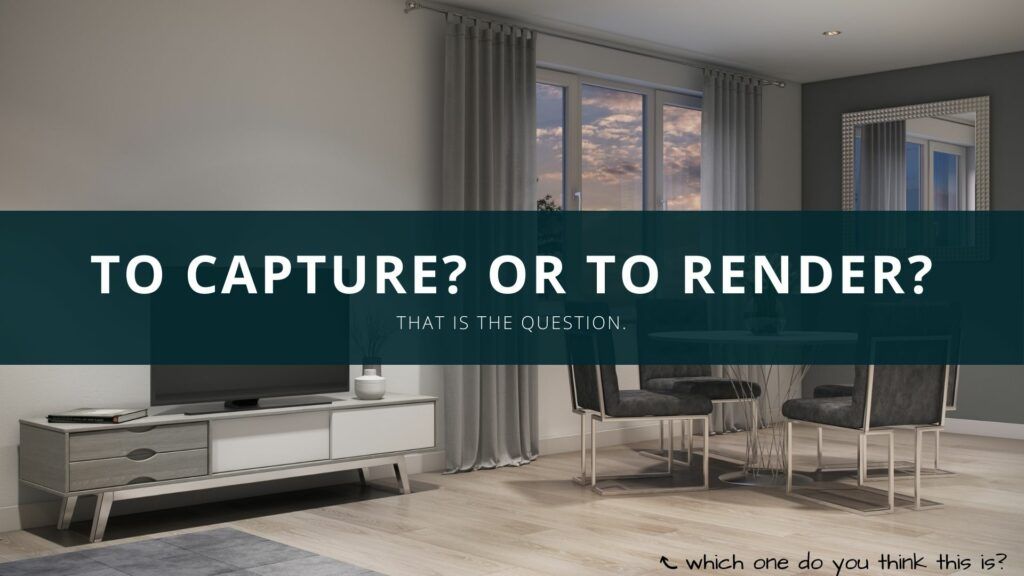A few weeks ago, we mentioned that many of our customers reach out to us for rendering their new properties around this time. That’s not the only type of requests we get. Quite a few of our customers also reach out to see if we can capture their existing properties with laser scanners and 360-panorama photography. Sometimes, we get questions on which one we recommend because the choice between rendering and capture is not always immediately obvious.
Why would that be? If the property exists, you’d scan the real thing, right? Not necessarily. Let’s run through a few reasons why you may want to choose one over the other.
1. Lease during renovations: render
If a property is under renovation, it may be under no condition to be shown to prospective residents, or for our production crew to capture. Even if it is safe to do so, it’s difficult for residents to picture your vision in their minds when the property is a construction zone. Renderings of the end results could help with that and keep the leasing process going, enabling units to be rented before renovations finish.
2. One dominant floorplan with demo unit: capture
If there is a floorplan that most units in the property have, and it has a “demo unit,” then we’d recommend capturing it. Most demo units are unoccupied, already staged, and regularly cleaned, making it easy – and therefore cost-effective – for our production crew to capture. If there is another floorplan that represents the rest of the units but does not have a demo, we can capture a unit of that at the same time the crew is on site. It is more complicated than capturing a demo unit, however. The property manager has to make sure the unit is cleaned beforehand, and unoccupied during capturing. Captures, however, are a quick way to a good result as turnaround time is typically within 1-2 days from the production date.
3. Many different floorplans – Option 1: render
If the property has many different floorplans, it is very expensive to have demo units for all, so units that have the corresponding floorplans would have to be captured. We found that the logistics of making sure the right units are cleaned, unoccupied, and staged could be challenging, and therefore costly.
Using renders could be much more cost-effective, especially if the units have the same finishes, materials, and furniture. Many of the 3D models created could be reused across floorplans, reducing the cost. Two units that have the same finishes, materials, and furniture could be completed and rendered in 4K, with customized staging, in 3-4 weeks. You would also be able to change the look and feel easily throughout the process, or even down the road. Often times, “virtual staging” can be considerably cheaper than staging multiple existing spaces – and there are limitless options for design elements.
4. Many different floorplans – Option 2: combine capture and render
You could, in fact, combine both capture and rendering for the same property. Footage of a captured unit can be used to help in rendering other units within the property. If the unit is laser-scanned, it will result in a 3D model that can be re-used. The model has dimensions of the unit, which is very useful in creating the “geometry” of the other units. The footage could also be used as a real-life reference on the finishes and materials of the unit.
This option is best when there are many different floorplans, but one of them has a demo unit. You can give prospective residents a glimpse into all available options in a cost-effective manner, and still showcase the real, physical property.
Curious to see whether capturing or rendering works best for your property? Drop us a line below!

